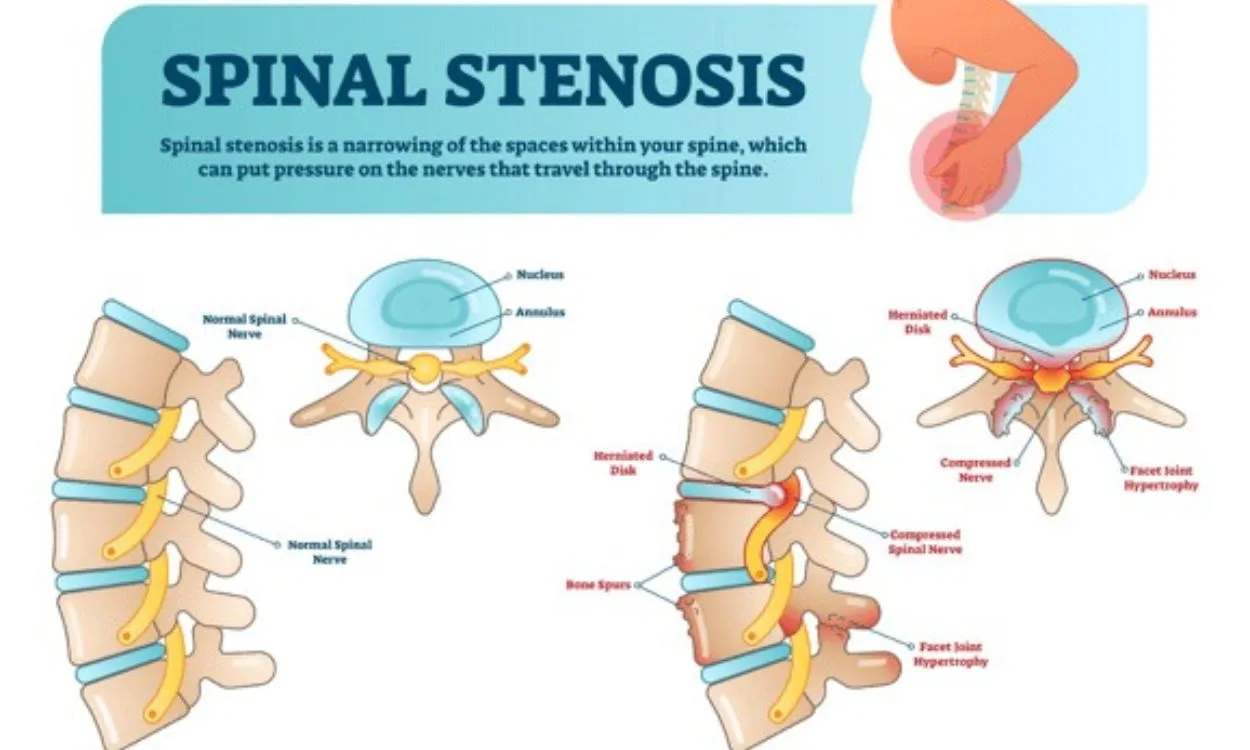Can Spinal Stenosis Contribute to Back Pain?
Introduction:
Spinal stenosis is a common condition that affects the spinal canal, causing narrowing and compression of the spinal cord and nerves. This narrowing can lead to various symptoms, including back pain. In this article, we will explore how spinal stenosis can contribute to back pain and discuss the management options for this condition.
Understanding Spinal Stenosis:
Spinal stenosis typically occurs due to age-related changes in the spine, such as the thickening of ligaments, formation of bone spurs, and the degeneration of spinal discs. These changes can result in the narrowing of the spinal canal and the spaces where the nerves exit the spine.
How Does Spinal Stenosis Cause Back Pain?
- Nerve Compression: The narrowing of the spinal canal can lead to the compression of the nerves that pass through it. This compression can cause pain, numbness, tingling, and weakness in the back, buttocks, and legs.
- Inflammation: The compression and irritation of the nerves can trigger an inflammatory response in the affected area. This inflammation can contribute to the sensation of pain.
- Restricted Blood Flow: The narrowed spinal canal can also restrict blood flow to the spinal cord and nerves, leading to pain and discomfort.
Symptoms of Spinal Stenosis-Related Back Pain:
- Back Pain: Spinal stenosis-related back pain is typically localized to the lower back region. It can vary in intensity and may be accompanied by stiffness and muscle spasms.
- Leg Pain: As the compressed nerves travel down the spine, they can cause pain, numbness, and tingling in the legs. This pain may worsen with walking or prolonged standing and may be relieved by sitting or leaning forward.
- Nerve-related Symptoms: In severe cases, spinal stenosis can lead to nerve-related symptoms such as weakness, difficulty walking, and loss of bladder or bowel control.
Diagnosing Spinal Stenosis:
If you experience persistent back pain or other symptoms suggestive of spinal stenosis, it is essential to consult a healthcare professional. The following diagnostic methods may be used:
- Medical History and Physical Examination: Your doctor will inquire about your symptoms, medical history, and perform a physical examination to assess your range of motion, muscle strength, and reflexes.
- Imaging Tests: X-rays, MRI scans, or CT scans may be ordered to visualize the spine and confirm the diagnosis of spinal stenosis. These imaging tests can help identify the location and severity of the narrowing.
Treatment and Management Options:
The treatment approach for spinal stenosis-related back pain may vary depending on the severity of symptoms and individual circumstances. Some common management options include:
- Medications: Nonsteroidal anti-inflammatory drugs (NSAIDs), pain relievers, and muscle relaxants may be prescribed to alleviate pain and reduce inflammation.
- Physical Therapy: A physical therapist can design a customized exercise program to improve flexibility, strengthen the back muscles, and enhance posture. They may also recommend other modalities such as heat or ice therapy.
- Steroid Injections: In some cases, corticosteroid injections can be administered directly into the affected area to reduce inflammation and alleviate pain.
- Assistive Devices: The use of assistive devices such as braces, canes, or walkers may help provide stability and support to the spine, reducing pain and improving mobility.
- Surgical Intervention: If conservative measures fail to provide relief, surgery may be considered. The goal of surgery is to relieve the pressure on the nerves by creating more space in the spinal canal.
Conclusion:
Spinal stenosis can contribute to back pain through nerve compression, inflammation, and restricted blood flow. If you experience persistent back pain or other symptoms suggestive of spinal stenosis, it is crucial to seek medical attention for diagnosis and appropriate management. Remember, early intervention and a comprehensive treatment plan can help alleviate pain and improve your quality of life.
Get Fitpaa App for Holistic Health and Fitness:
If you are looking to enhance your overall health and fitness, the Fitpaa app can be an excellent companion. With a team of expert fitness coaches, nutritionists, and doctors, Fitpaa offers personalized health and fitness plans tailored to your goals, lifestyle, and eating habits. The Fitpaa Capsule, consisting of medical therapy, nutrition advice, exercise guidance, and cognitive behavioral therapy, can optimize your metabolism and help you achieve your health and fitness goals with guaranteed results.
To experience the joy of getting fit and excel at life, download the Fitpaa app now and embark on your journey towards a healthier and happier you. Your well-being is our mission, and we are here to support you every step of the way.









